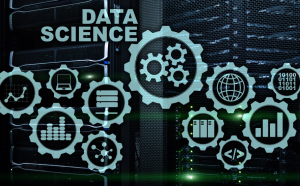
Inside Microsoft Fabric: A Conversation with a Data Scientist
July 10, 2025
As a non-technical person, I wanted to understand more about Microsoft Fabric and why people love this tool. I sat down with one of our data experts, Anastasiia, to get a better understanding of how Microsoft Fabric helps her in her work. This blog will provide you with a more in-depth view inside Microsoft Fabric, it’s benefits, and it’s failures.
When I asked her to talk to me about Fabric, her immediate response was, “Fabric is a masterpiece. It is super convenient and underestimated as a tool. However, I am incredibly happy to see our clients becoming more aware of all the benefits Fabric is offering as we receive more and more requests to migrate their existing infrastructure to Fabric.” She went on to tell me that Fabric is not just another analytical platform. It’s a unified, end-to-end ecosystem that streamlines everything from data ingestion to machine learning and business intelligence.
Favourite Fabric Features
Anastasiia is a big fan of Pyspark and Microsoft Fabric provides built-in Python support for Apache Spark (including Pyspark), which allows users to interact with Spark using familiar Spark or Python interfaces.
Microsoft Fabric’s quiet superpower is how welcoming it is to professionals from the diverse technical backgrounds, whether they are a SQL developer, a Python data scientist, a Data Engineer, or a low code/no-code Business Analyst. All of them can work on the same data in their preferred environments.
She is also a huge fan of the Metadata-Driven approach in Data Warehousing (this is an approach that our Improving Winnipeg Data Engineering & Business Intelligence team is famous for). Instead of hardcoding logic for each data source or pipeline, Microsoft Fabric enables a metadriven approach where data engineers define tables and configuration files that specify key parameters like source SQL, destination schemas, load types, transformation rules, refresh logic, etc.

These metadata driven tables guide the orchestration of the pipelines, making them reusable and scalable for large environments, and easier to maintain when sources or business rules change. Since these configurations are structured and declarative, they are also easy to version and manage through git source control, allowing teams to track changes, collaborate, and deploy updates consistently across environments.
Connectivity is another highlight of Microsoft Fabric. “Connecting to data sources can be a real headache,” Anastasiia explained, “but Fabric makes it much simpler.” Whether it’s SQL on-prem database, cloud storage, or real-time feeds, the integration is smooth. And the bonus? The data quality is noticeably better, which is crucial for any kind of meaningful analysis.
OneLake, the central data lake in Microsoft Fabric, really caught Anastasiia’s attention. Most organizations still face challenges with siloed data across departments and platforms. Finance might rely on SQL databases, Marketing may keep companies data in CSVs on SharePoint, and Operations could log sensor information into blob storage. These fragmented systems slow down analysis, complicate data governance and limit access to reliable insights.
Microsoft Fabric’s OneLake addresses this by serving as a centralized, governed datalake that eliminates duplication and unifies information across sources and supports structured, unstructured and lakehouse formats. It creates a single point of truth for the entire organization – data is stored once, enriched with metadata and context, and made searchable, shareable and traceable. Built-in governance tools add visibility over access and usage, while pipelines ingest and organize data seamlessly. The result is a structured environment where teams can work with consistent, high-quality data without jumping between tools or worrying about outdated or redundant information. Sounds like a dream, right?
Accessing quality data is essential when making business decisions that matter. Business owners are increasingly demanding important and useful information that tells an accurate story about their business. Fabric is meeting many of those demands.
We also discussed how Fabric combines various technologies, like data tables, pipelines, and endpoints, all in one place, which further adds to its convenience. That’s rare. Usually, teams have to juggle multiple tools to get from raw data to business insights, but Fabric eliminates much of that friction.
Fabric’s Failings
Her biggest critique was that people don’t know enough about Fabric – this might be because many of its features are still in preview and are not currently known.
This is actually a double-edged sword. On the one hand, Fabric is still growing, with key components like real-time analytics, semantic links, and advanced ML tooling in active development. On the other hand, for early adopters, this is a golden opportunity to get ahead. You are using tools that are on the cutting edge and evolving fast, which means your workflows are future-proof and won’t be stuck in legacy systems later.
That said, it is not for everyone – especially if you are new to data science or data engineering or prefer simpler interfaces. The learning curve can be steep, and some features may feel immature or inconsistent. Anastasiia agreed that it is not perfect, and probably never will be. But that is the nature of ambitious platforms – they grow, they evolve, and the experience gets better overtime.
Inside Microsoft Fabric Conclusion
Microsoft Fabric offers an all-in-one approach, which simplifies workflows and accelerates collaboration between the teams. It may not be perfect for every scenario, but for teams seeking an end-to-end analytics solution, it is hard to beat. Unlike competitors such as AWS, Google, and IBM, which excel in one niche and require stitching together separate services, Fabric brings data engineering, data science, warehousing, and BI into one unified platform.
Fabric doesn’t ask you to change how you work. It adapts to you, letting you work in your preferred environment, whether it is writing SQL queries against endpoints, building predictive models in Spark notebooks using Python or R, designing semantic models in Power BI, orchestrating low-code dataflows and pipelines, connecting with Excel or third party BI tools, or even working across cloud storage with shortcuts to AWS and Google data sources. It might just become your team’s favorite tool, as it became Anastasiia’s.
Thanks for reading! We hope this exclusive look inside Microsoft Fabric was useful. If you are looking for a Microsoft Fabric solution, get in touch by filling out the form at the bottom of this page. Make sure to subscribe to our blog. We publish technology tips, tricks, and updates every week.
Want to hear the latest from out team of experts? Sign up to receive the latest news right to your inbox. You may unsubscribe at anytime.

Discover More
Integration Between Power Platform and SharePoint Encourages Innovation
Organizations are focusing on innovation, streamlining their processes, and delivering better experiences for employees and customers. Power Platform and SharePoint are the Microsoft products that are helping organizations focus on…
Mastering Subagents in VS Code + Copilot: How To Actually Use Them
If you’ve ever dumped a giant problem into Copilot Chat and watched the conversation slowly turn into spaghetti, subagents are the feature you’ve been waiting for. Think of subagents as…
5 Common Misconceptions About Cloud Migration: Debunking the Myths
We’ve all heard of the cloud and cloud migration. But how important is it actually for your business? Organizations are moving to the cloud for several reasons: to improve agility,…

Let’s build something amazing together
From concept to handoff, we’d love to learn more about what you are working on.
Send us a message below or call us at 1-800-989-6022.





